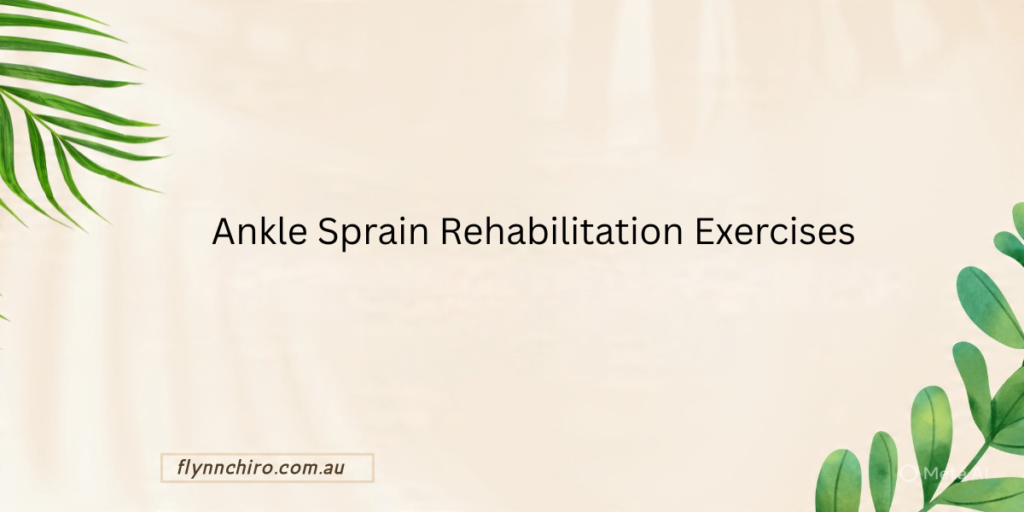
Ankle Sprain Rehabilitation Exercises
An ankle sprain can happen in an instant — during sport, while walking on uneven ground, or even by missing a step. The result is often pain, swelling, and stiffness that can make it difficult to move normally. Once the initial pain begins to settle, structured rehabilitation is key to helping your ankle regain its strength, stability, and flexibility.
At Flynn Chiro, we regularly help patients recover from ankle sprains and other lower limb injuries at our clinics in Melbourne CBD and Prahran. This guide outlines safe, step-by-step ankle rehabilitation exercises that can support your recovery.
Please remember: every injury is different. Always consult your healthcare professional before starting any new exercise routine.
Regaining Strength After an Ankle Sprain
An ankle sprain occurs when the ligaments — the strong bands of tissue that connect the bones of the ankle — are overstretched or torn. Depending on the severity, you might notice swelling, bruising, or difficulty putting weight on your foot.
Even mild sprains can weaken the stabilising muscles and ligaments, increasing the risk of future injury if not rehabilitated properly. Rehabilitation exercises help you rebuild strength, flexibility, and coordination so you can return to your usual activities safely and confidently.
When to Begin Rehabilitation
The early phase of an ankle sprain should focus on rest and managing swelling. Many people follow the PEACE and LOVE approach — Protection, Elevation, Avoid anti-inflammatory medication, Compression, Education, followed by Load, Optimism, Vascularisation, and Exercise.
Once swelling has reduced and basic ankle movement is possible without sharp pain, gentle rehabilitation can begin. These exercises are suitable for the sub-acute to recovery phase, but timing may vary for each person. If you’re unsure, it’s best to check with your chiropractor, GP, or physiotherapist before starting.
Warming Up Before Exercise
Before you start, prepare the ankle and surrounding muscles with a short warm-up. Gentle ankle circles, pointing and flexing the toes, or a few minutes of easy walking help increase circulation and improve comfort.
Make sure the area you’re using is safe and stable. You may prefer to remove your shoes or wear thin-soled footwear to improve foot control. Keep a towel and sturdy chair nearby for support.
1. Toe Curls
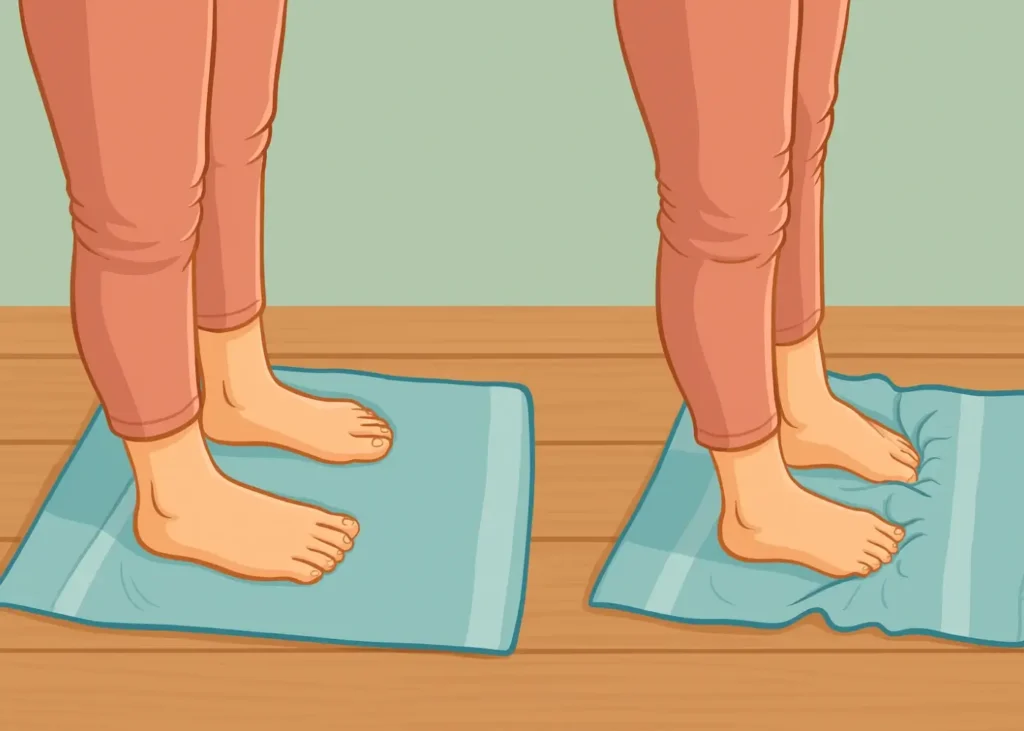
Purpose:
To strengthen the small muscles of the foot and improve arch stability and ankle control.
How to Perform:
- Place a towel flat on the floor.
- Standing or seated, use your toes to scrunch the towel towards you.
- Hold the position for about 10 seconds, then let the towel return to flat.
- Repeat 5–10 times, twice a day.
Tips:
Keep your heel on the floor throughout. Focus on smooth, deliberate movements rather than speed. You should feel a gentle engagement under your arch — not pain.
2. Ankle Turns
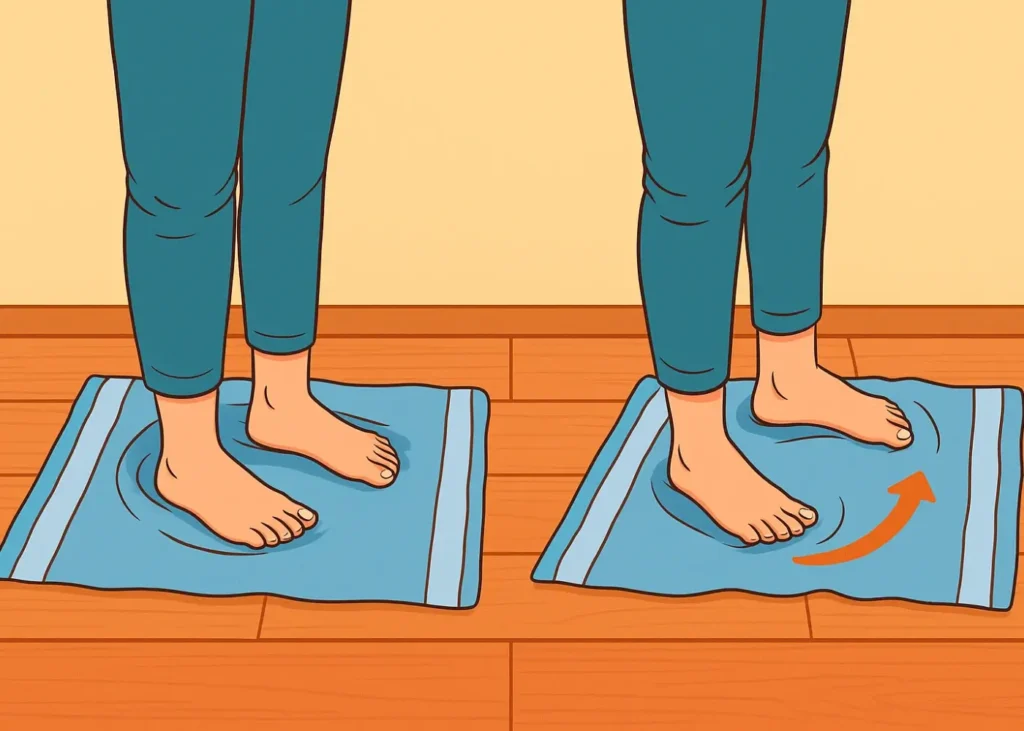
Purpose:
To restore mobility and coordination in the ankle joint and encourage smoother side-to-side movement.
How to Perform:
- Stand on a towel placed on a flat surface.
- Slowly turn both feet to the right, then to the left.
- Repeat 5–10 times, twice a day.
Tips:
Move within a comfortable range and avoid forcing the movement. Imagine you’re gently “wiping” your feet on the floor rather than twisting sharply. Controlled motion is key.
3. Heel Raises
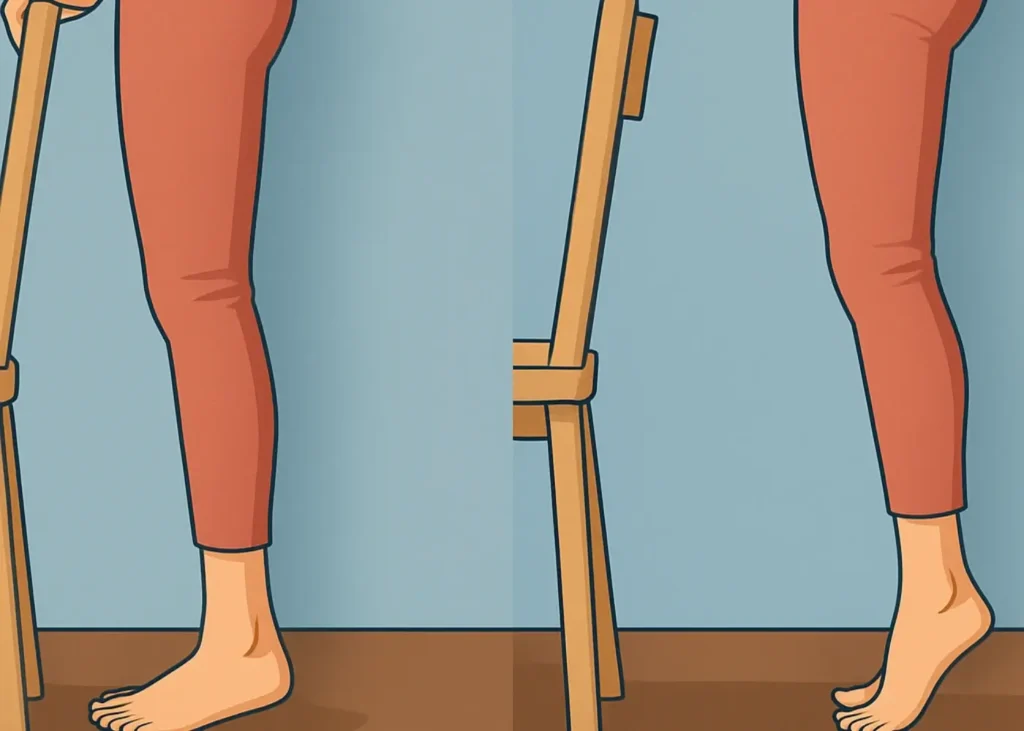
Purpose:
To strengthen the calf muscles and ankle stabilisers, improving balance and support during walking and running.
How to Perform:
- Stand upright and hold the back of a chair or wall for balance.
- Rise up onto your toes, lifting your heels off the ground.
- Hold this posture for 10–15 seconds.
- Slowly lower your heels back down.
- Repeat 10–15 times, twice a day.
Tips:
Maintain good posture and keep your knees straight but not locked. Focus on a slow, steady lift and a controlled lowering. As your strength improves, try performing the exercise without holding on or with one leg at a time.
4. Half Squats
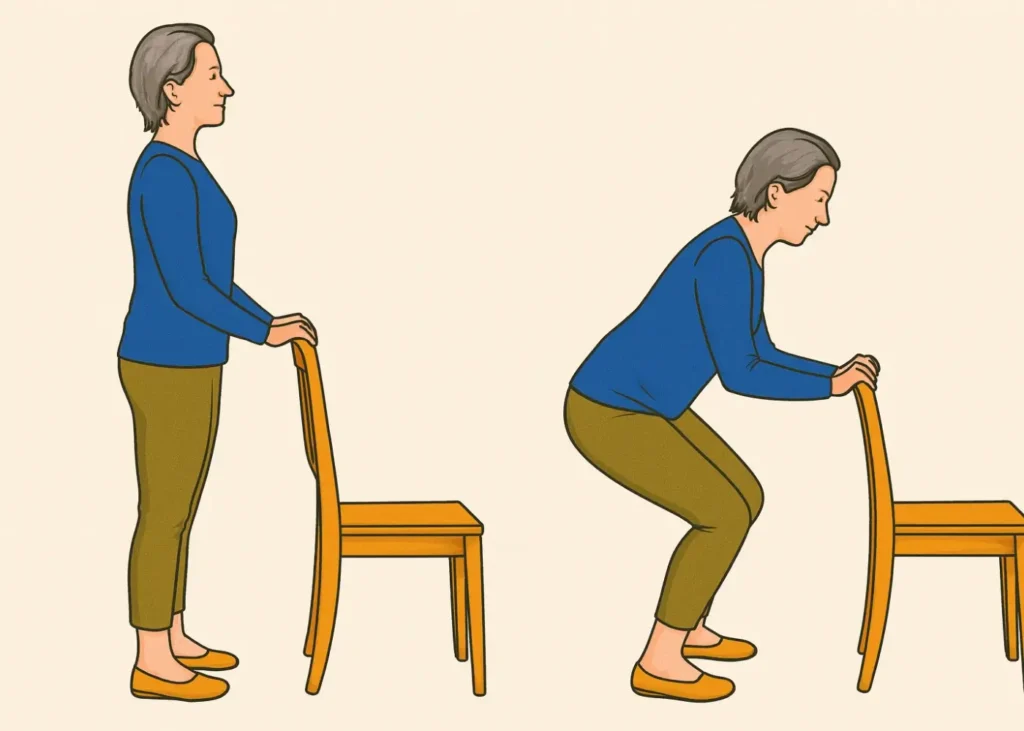
Purpose:
To build strength and stability through the legs, knees, and ankles — essential for returning to normal activities and preventing re-injury.
How to Perform:
- Stand with your feet shoulder-width apart, lightly holding a chair for support if needed.
- Bend your knees to perform a half squat, keeping your back straight and your heels on the floor.
- Hold the position for 5 seconds.
- Return to standing.
- Repeat 10–15 times, twice a day.
Tips:
Keep your knees tracking over your toes rather than collapsing inwards. Move slowly and evenly, avoiding any bouncing or jerky motion.
Read Also: Ankle Mobility and Strengthening Exercises
Calf and Shin Stretches: Relieve Tightness and Support Healthy Movement
Progressing Your Recovery
These exercises form the foundation of early ankle rehabilitation. Once they become easy and comfortable, your chiropractor may recommend progressing to more challenging balance and strengthening work.
Examples include:
- Single-leg balance: Stand on the injured leg for 30 seconds, gradually increasing the time. Progress by closing your eyes or standing on a cushion.
- Wobble board or balance pad drills: These help retrain the ankle’s proprioception — your body’s ability to sense position and movement.
- Resistance band exercises: Gentle pushes and pulls with a band can rebuild muscle control in different directions.
- Functional training: Gradual return to walking, light jogging, or sport-specific movements under supervision.
The goal is steady progress rather than speed. Pain, swelling, or instability are signs to ease back or check in with your healthcare provider.
Why Professional Guidance Matters
Even simple sprains can have lingering effects if not managed properly. Weakness, stiffness, or altered walking patterns may persist, increasing the chance of another injury.
At Flynn Chiro, we take a thorough approach to recovery. Your care may include gentle hands-on techniques to restore joint motion, soft-tissue work for tight or overactive muscles, and tailored exercise guidance. We also review how your hips, knees, and feet move together — since ankle problems often relate to the way your whole lower body functions.
If progress slows or pain continues despite regular exercise, it’s worth seeking assessment to rule out a more complex injury or alignment issue.
Preventing Future Sprains
Once your ankle feels strong again, prevention becomes the next priority. You can help protect against future injuries by:
- Continuing your strength and balance exercises a few times each week
- Wearing supportive footwear suited to your activities
- Taking time to warm up properly before exercise or sport
- Avoiding uneven or slippery surfaces when possible
- Considering ankle taping or bracing during high-risk sports
Consistency is the key. The more you train your ankle to react and stabilise, the more resilient it becomes.
Final Thoughts
Recovering from an ankle sprain takes patience, consistency, and the right guidance. Simple rehabilitation exercises, performed regularly and safely, can make a remarkable difference in how well your ankle heals and how confident you feel getting back to movement.
If you’re unsure when to begin or want a tailored plan suited to your condition, Flynn Chiro can help guide your recovery with professional, evidence-based care at our Melbourne CBD and Prahran clinics.

Flynn Pettersson
I am committed to providing exceptional chiropractic care in Melbourne, focused on your health and well-being.

Flynn Pettersson
I am committed to providing exceptional chiropractic care in Melbourne, focused on your health and well-being.






